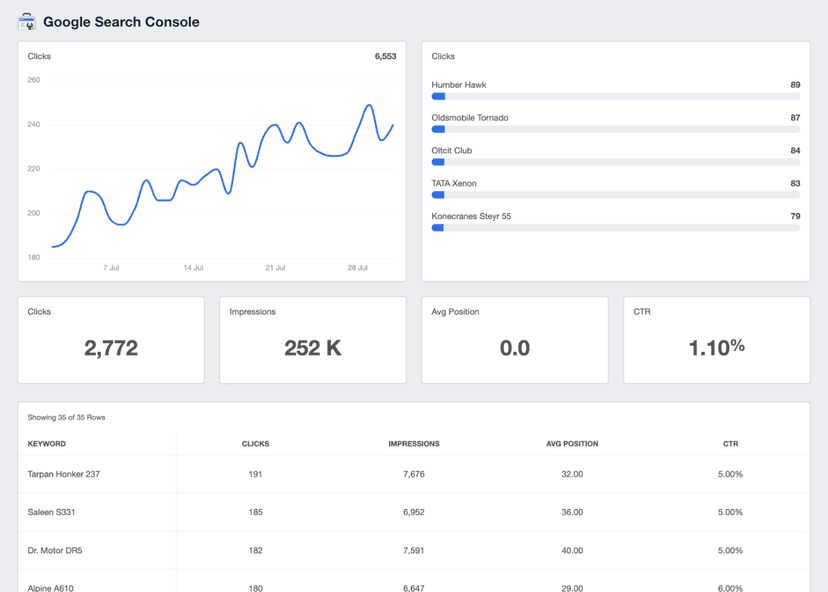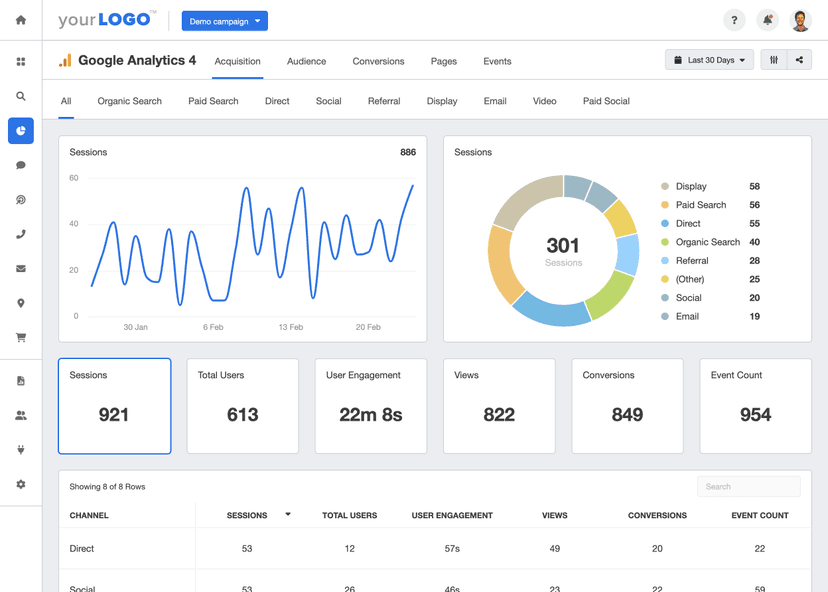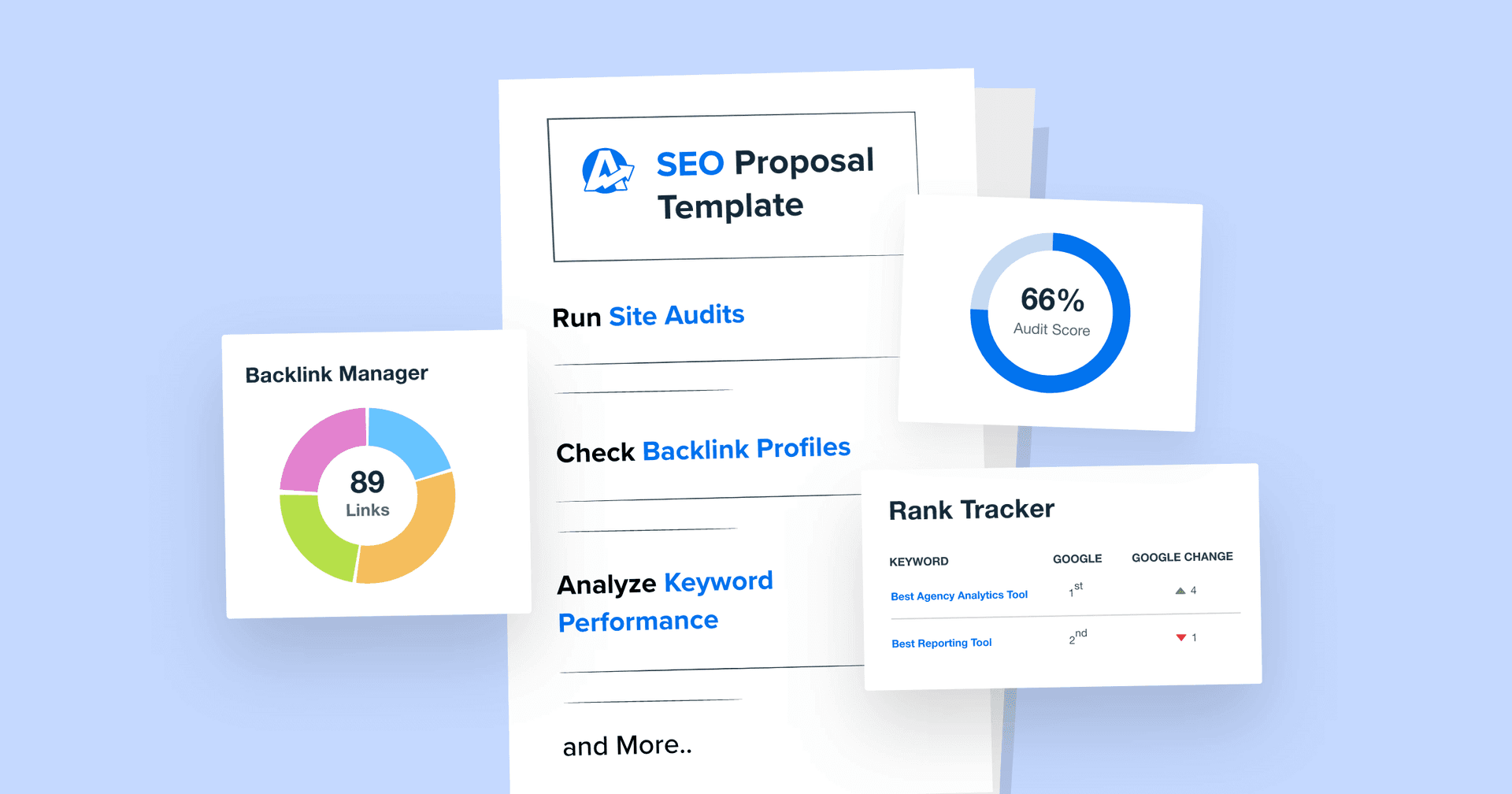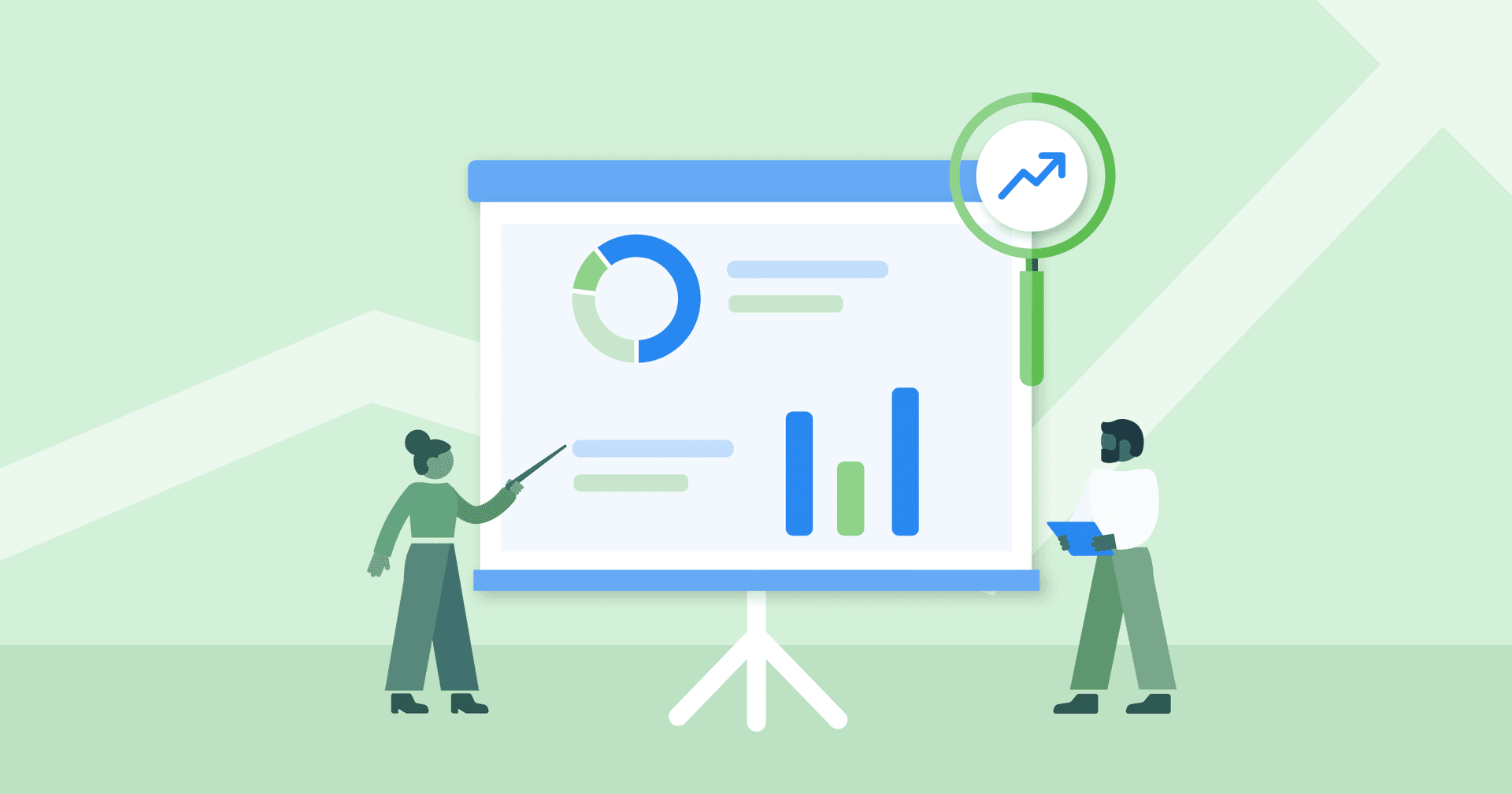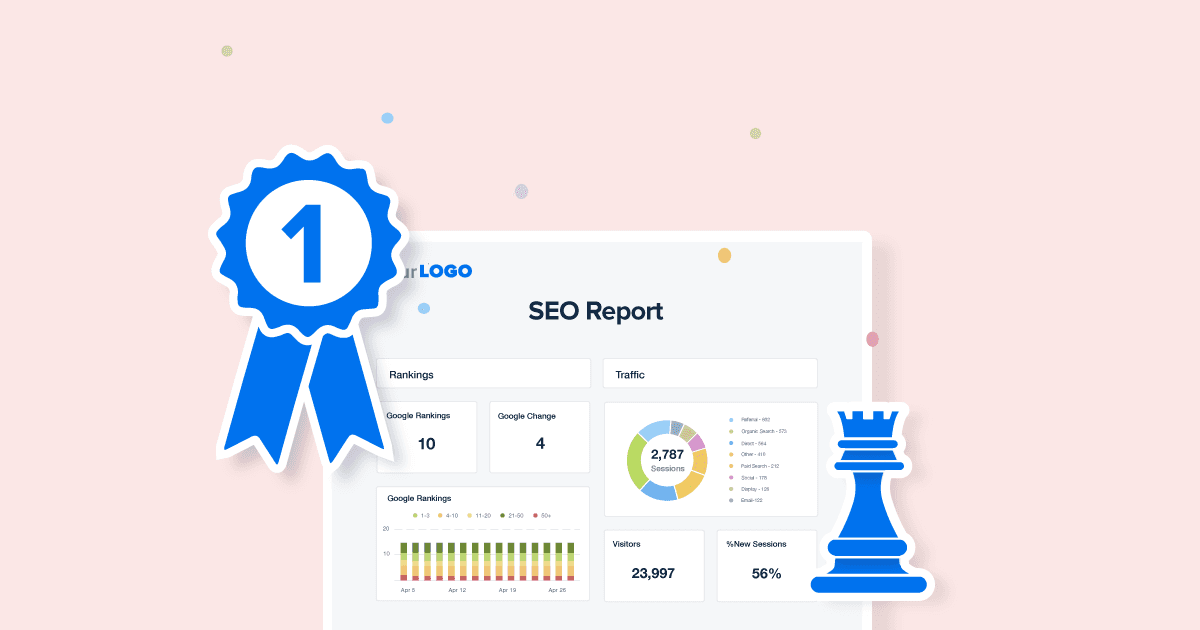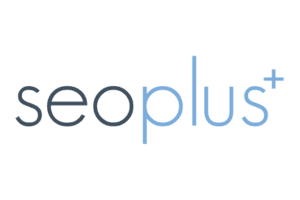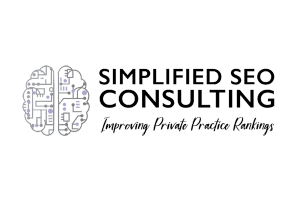Organic Search Visibility
Ranking Trends
Track visibility shifts to see keyword positions in search engines.
High-Impact Focus
Prioritize relevant keywords with the potential to boost search engine visibility.
Competitive Benchmarking
Compare visibility against competitors to spot SEO opportunities.
Performance Reports
Show visibility progress to reinforce ROI in client reports.
Why Search Visibility Matters to SEO Campaigns
Search visibility is a vital measure of how often a brand surfaces in search engine results. The higher the visibility, the more chances there are to connect with new visitors, as it reflects top rankings for the keywords that matter most.
Tracking this metric helps to spot any changes, providing a clear picture of whether SEO efforts are expanding reach effectively. It’s an essential benchmark for measuring how well a site connects with searchers and stays at the top of search results.
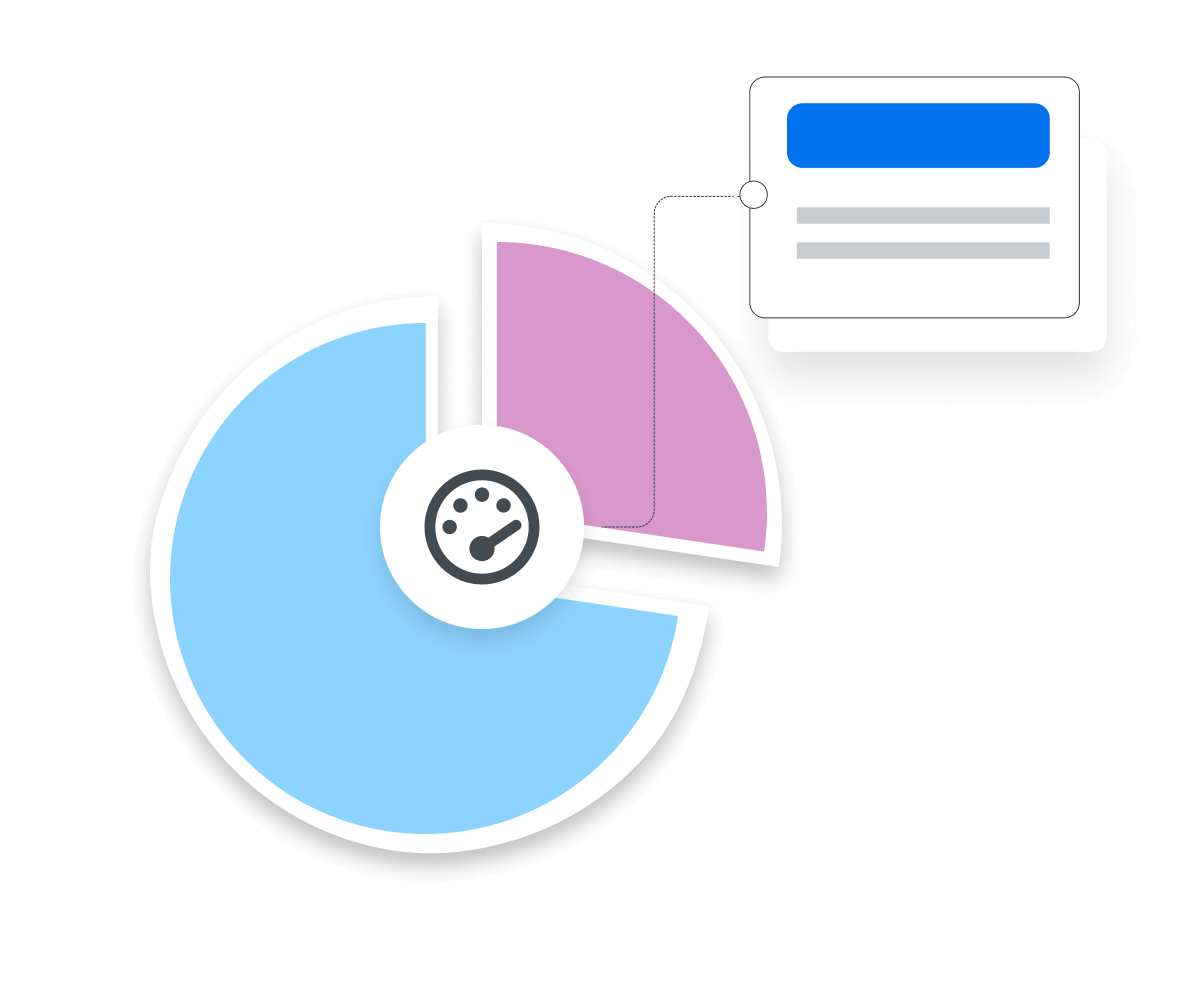
Stop Wasting Time on Manual Reports... Get SEO Insights Faster With AgencyAnalytics
How Search Visibility Relates to Other KPIs
Higher keyword rankings directly boost visibility on search engine results pages (SERPs), making it easier for potential customers to find a brand within organic search results. As visibility improves, so do clicks.
Visibility data is instrumental when paired with data from tools like Google Analytics and Google Search Console. These tools track impressions, clicks, and session behavior, giving marketers deeper insight into how visibility impacts website engagement.
Search visibility also supports conversion-related KPIs. Higher rankings generate more traffic, often leading to improved conversion rates and lead generation. By tracking visibility alongside these KPIs, it becomes clearer how search visibility directly impacts a campaign's overall effectiveness and the brand’s online reach.
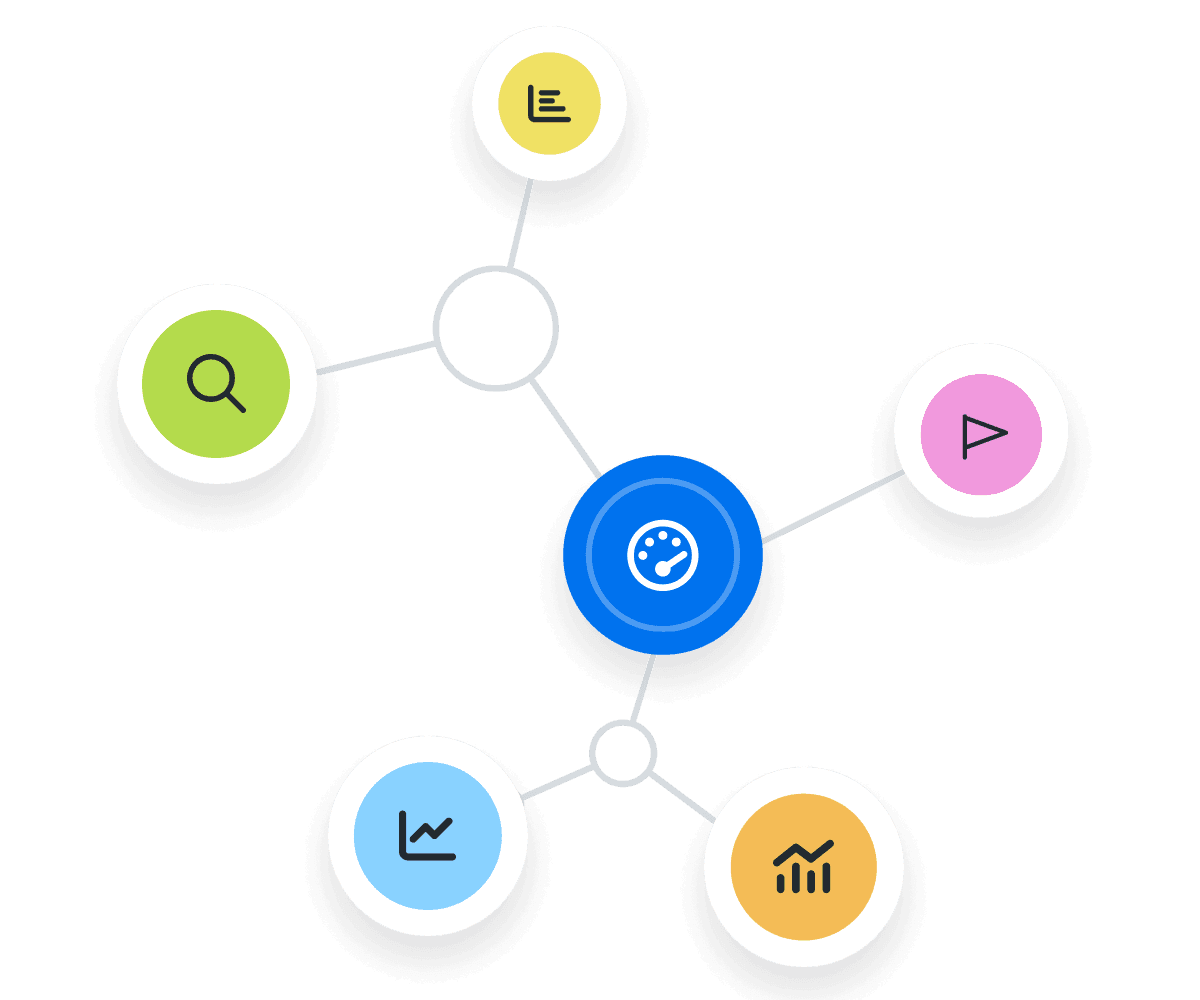
Top Factors That Impact Search Visibility
Search visibility depends heavily on keyword relevance, meaning content must be optimized for relevant keywords that match user intent. Higher keyword relevance increases the chances of appearing in top search results, which directly impacts visibility. Technical elements like site speed, mobile responsiveness, and user experience also play a significant role. A poor site experience can lead to a search visibility drop, even if content is well-optimized.
Regularly updating content with fresh, useful information is also essential for improving search visibility. Monitoring these elements helps maintain strong visibility and guard against sudden drops affecting organic reach. Although hotly debated, most SEO experts still believe backlink quality and quantity are additional factors. Links from credible sources signal authority, boosting visibility.

Top SEO Metrics to Track for Context Around Search Visibility
Search visibility provides a high-level view of a site’s prominence, but pairing it with other metrics is key to understanding SEO performance. Keyword rankings are a critical metric, as they reveal where specific pages rank for target keywords, directly impacting visibility. When rankings improve, visibility usually follows, making rankings essential for tracking progress on a granular level.
Google Search Console impressions offer another valuable layer of insight. Impressions show how often a site appears in search results, connecting visibility to potential reach and highlighting opportunities for further optimization. Organic website traffic rounds out the picture, showing how visibility translates into actual visits and engagement. When visibility is high, but traffic is low, it’s a cue to reassess keyword selection, content relevance, or user experience. Together, these metrics put visibility in context, linking rankings, reach, and engagement to support smarter SEO decisions.

How Is Search Visibility Calculated?
Search visibility is calculated by estimating the click-through rate (CTR) a site could achieve based on ranking positions for tracked keywords within search engine results. Tools like Semrush analyze a website’s positions in the top 100 results for each tracked keyword, weighting higher rankings more heavily in the overall score. This visibility percentage provides a quick view of how often a site appears to searchers for its targeted terms, with a 100% score reflecting first-place positions across all tracked keywords.
What Is a Good Search Visibility Score?
A good SEO visibility score generally falls between 35% and 45% for competitive industries, as it suggests a site appears frequently in Google search results for the targeted keywords. Scores above 50% indicate strong visibility and consistent rankings within the top results, which can drive substantial organic traffic.
What Is a Bad Search Visibility Score?
An SEO visibility score below 10% often signals low visibility, meaning the website rarely appears in relevant search engine results. Scores this low suggest that a brand’s content isn’t ranking well for its keywords, which can significantly limit organic traffic potential and overall reach.
How To Set Search Visibility Benchmarks and Goals
When established benchmarks are unavailable, custom visibility goals should be set by analyzing historical data and aligning it with revenue objectives. An agency might back-calculate the visibility score required to meet traffic goals that support revenue targets.
For example, if achieving a certain level of search traffic aligns with desired conversions, marketers can track which visibility scores previously hit those levels and use these as reference points to inform SEO strategies.
Benchmarking Beyond Score
Setting search visibility goals isn’t just about achieving a specific score; interpreting trends within a broader context is essential. Agencies can track visibility trends against industry norms or direct competitor metrics to better understand what a “good” score looks like in their niche. For example, if competitors see similar visibility trends—like seasonal drops or increases—it provides reassurance that fluctuations are likely normal rather than cause for concern. Comparing visibility to industry benchmarks also helps agencies set realistic growth goals. For instance, in a highly competitive market, a visibility score of 20% may be strong, while in less competitive sectors, 40% might be the target.
Digging Deeper into Search Visibility
To get granular insights, marketers can use tags to break down search visibility by keyword group, page type, or content category to identify specific areas of improvement. Tracking visibility scores by high-priority or high-intent keywords or by brand and non-brand terms reveals detailed patterns in reach and ranking performance, helping pinpoint which content or keywords contribute most to growth.
Why Search Visibility Matters to Clients
For digital marketing clients, organic search visibility represents brand reach and the potential to attract new customers. High visibility for target search queries means their brand is more likely to appear when potential customers search for relevant topics, increasing the chance for organic traffic that requires no ad spend. From their perspective, website search visibility reflects the success of SEO efforts in driving search engine rankings, awareness, and engagement without constant investment in paid campaigns.
This metric also helps clients understand the competitive landscape. A strong visibility score indicates that the brand is capturing the user’s attention… instead of its competitors, making it easier to justify continued investment in SEO. Ultimately, tracking search visibility gives clients a sense of stability and growth in online presence, offering measurable returns on marketing efforts.

Why Search Visibility Score Matters to Agencies
For agencies, a search visibility score quickly gauges how well SEO strategies are working. Since visibility aggregates keyword performance across search engine results, agencies pinpoint which campaigns or content pieces are gaining traction and which may need adjustments. This high-level view makes it easier to prioritize resources for maximum impact.
Agencies also rely on search visibility to demonstrate SEO ROI to clients. By tracking changes in visibility, agencies can show clients clear progress over time, reinforcing the value of ongoing SEO efforts. Additionally, visibility metrics help agencies stay proactive, catching potential dips before they affect traffic and providing data to back any strategic pivots. Search visibility isn’t just a KPI for agencies—it’s an essential tool for client retention and campaign optimization.

Why Search Visibility Differs Across Devices
Search visibility often varies between mobile and desktop devices because of how search engines display results on each platform. Mobile results tend to emphasize local search intent and highlight features like Google’s 3-pack for local businesses, which may not appear in the same way on a desktop. These mobile-specific results increase visibility for brands with local relevance but may lower visibility for those targeting broader or national audiences.
Additionally, mobile screens display fewer organic results before users need to scroll, making top-ranking spots even more valuable for mobile visibility. Desktop results, in contrast, offer more real estate, often displaying multiple paid ads and a larger number of organic results per page.
Save Time and Streamline Your Agency’s SEO Reporting
Best Practices When Analyzing and Reporting on Search Visibility
Conducting a comprehensive analysis of search visibility offers critical insights into a website's performance in search results. By examining search visibility from multiple perspectives—across time, channels, and campaigns—marketers can set the stage for more targeted and impactful advertising strategies.
Ensure Data Accuracy
Accurate data is essential for understanding a website's search visibility. To ensure consistency, use reliable SEO tools that track search visibility metrics across both desktop and mobile devices.
Track Search Visibility Over Time
Tracking search visibility over time reveals how SEO strategies are performing and where adjustments may be needed. Reviewing visibility trends by week or month helps marketers spot seasonal shifts and the impact of recent campaigns.
Spot Trends and Anomalies in Visibility
Understanding trends and anomalies in search visibility helps detect unexpected shifts in ranking positions. For example, sudden changes could point to search intent updates, competitive moves, or algorithm adjustments.
Contextualize Visibility Metrics
Placing search visibility in context provides valuable benchmarks for assessing SEO success. Comparing visibility data against industry averages or competitors’ performance clarifies a brand’s position in the market.
Visualize Search Visibility Performance
Visualizing search visibility with charts and graphs simplifies complex data for clients. Mapping visibility trends helps clients see how their website’s reach evolves, making it easy to demonstrate progress.
Align Search Visibility with Client Goals
Aligning search visibility data with specific client goals strengthens the link between SEO efforts and business impact. Connecting improved search visibility with metrics like site visits or conversions illustrates how rankings support broader objectives.
Semrush Dashboard Example
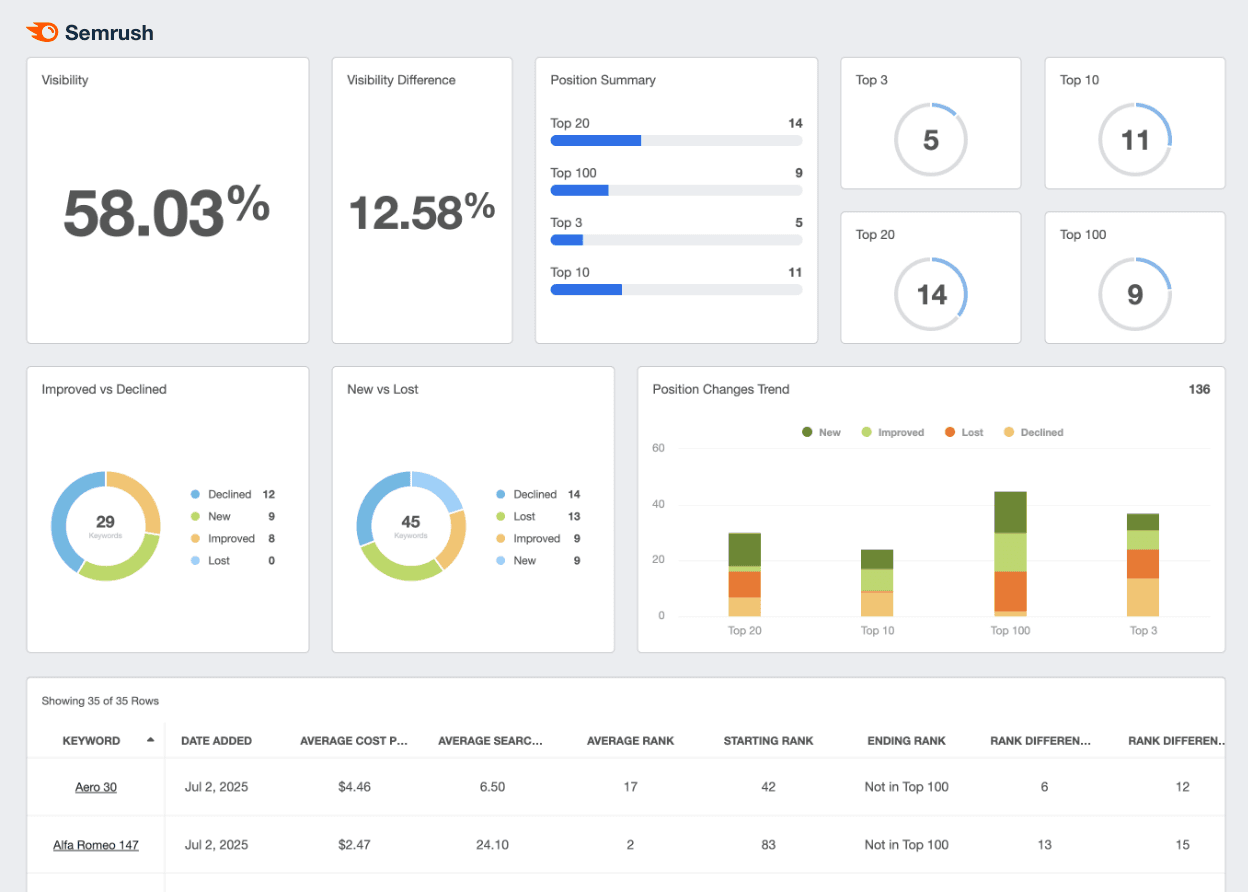
Related Integrations
How To Improve Organic Search Visibility
Boosting search visibility involves strategic content optimization and keyword targeting to ensure a brand appears more prominently in search results. Here are three practical tips for enhancing website visibility, ranking for target keywords, and driving more organic traffic.
Build Internal Links
Strengthening internal links between related web pages improves search engine visibility by helping search engines understand content hierarchy. Use clear, descriptive anchor text to connect relevant pages, reinforcing the importance of target keywords across the site. A well-structured internal linking strategy guides search engines and can increase the authority of key pages.
Target Relevant Keywords
Selecting relevant, high-intent target keywords ensures that content and the brand align closely with what users search for, maximizing the chances of reaching a qualified audience. Focus on keywords relevant to the audience’s needs and core topics. Prioritizing relevance over sheer search volume helps attract more engaged users and improves the likelihood of ranking higher in search engine results.
Regularly Refresh Content
Updating existing web pages with current information and additional relevant keywords can improve search engine visibility. Identify pages that could perform better, then add new insights, tips, or case studies to increase relevance. This ongoing optimization keeps content fresh and aligned with current search trends, boosting visibility.
Related Blog Posts
See how 7,000+ marketing agencies help clients win
Free 14-day trial. No credit card required.

